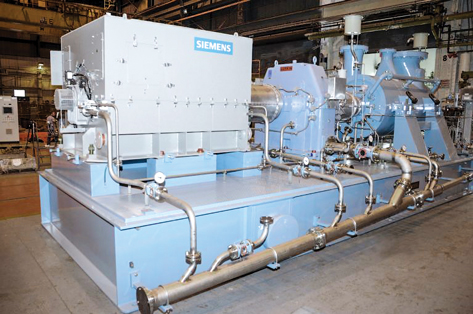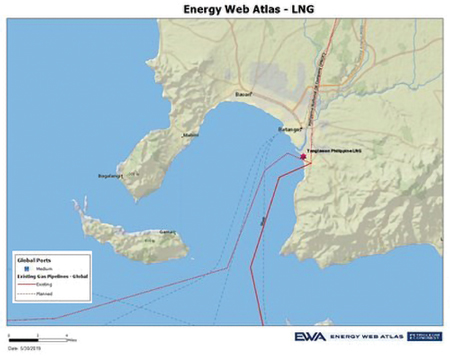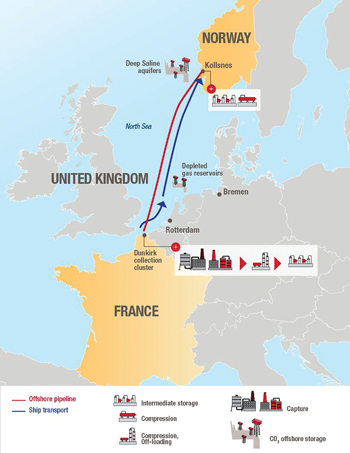New in Gas Processing Technology
A. Blume, Editor
Hydrogen study for a secure energy future
A new International Energy Agency (IEA) report, “The future of hydrogen: Seizing today’s opportunities,” finds that clean H2 is receiving strong support around the world, with the number of policies and projects expanding rapidly. H2 can help tackle various critical energy challenges, including helping store variable output from renewables like solar PV and wind to better match demand. It offers ways to decarbonize a range of sectors—including long-haul transport, chemicals, and iron and steel—where it is proving difficult to meaningfully reduce emissions.
H2 can be transformed into electricity and methane to power homes and feed industry, and into fuels for cars, trucks, ships and planes. The report notes that H2 still faces significant challenges. Producing H2 from low-carbon energy is costly at the moment, the development of H2 infrastructure is slow and holding back widespread adoption, and some regulations currently limit the development of a clean H2 industry.
Today, H2 is already being used on an industrial scale, but it is almost entirely supplied from natural gas and coal. One approach to reducing H2 emissions is to capture and store the CO2 from H2 production from fossil fuels. Another is for industries to secure greater supplies of H2 from clean electricity. In the past two decades, more than 200 projects have started operation to convert electricity and water into H2.
Siemens enters Permian with electric-drive compressor
 |
Siemens was recently awarded a contract to provide three residue compression trains for two 250-MMsft3d cryogenic gas plants in the Delaware basin. Each train consists of a 22,000-hp motor, a gearbox, and a multi-stage Dresser-Rand DATUM centrifugal compressor, all mounted onto a single skid.
Mid-size gas treatment plants traditionally use reciprocating compressors driven by electric motors or gas engines. However, with the increase in production from shale plays, larger gas plants (200 MMsft3d–300 MMsft3d) are being constructed, forcing gas processing companies to consider alternative compression solutions to reduce costs, footprint and maintenance. Siemens’ centrifugal compressor solution met the entire plant duty using just three compression units while ensuring low turndown capability. The plot space and ancillary infrastructure was also reduced, resulting in capital cost savings for the customer.
New technology produces animal feeds from gas
BP Ventures has made an investment of $30 MM in Calysta Inc., an alternative protein producer, that will use BP's natural gas to produce protein for fish, livestock and pet feeds. The investment supports BP's strategy of creating new markets in which gas can play a material role in delivering a more sustainable future.
Calysta's proprietary gas fermentation technology produces FeedKind protein, a sustainable feedstock that can be used for fish, livestock and pet nutritional products. The process has the potential to help meet growing demand for feed in the aquaculture and wider agriculture markets, without some of the environmental impacts of current sourcing methods.
During the FeedKind process, a naturally occurring bacteria is grown in a proprietary fermenter using methane as its carbon and energy source. This creates a single-cell protein that is harvested and dried prior to being pelletized. Calysta's microorganisms are a naturally occurring component of healthy soils worldwide.
First Gen starts work on Philippines LNG project
 |
First Gen operates four power plants with a combined capacity of 2,000 MW relying completely on natural gas from the country’s Malampaya gas field. The company plans to ensure availability of imported gas for its power plants ahead of an expected depletion in Malampaya’s gas reserves by 2024. An FID for the LNG project—one of three planned for the Philippines—may be made by late 2019 or early 2020.Phillippines-based First Gen Corp. has completed significant pre-development work for its planned LNG terminal, which is a JV with Tokyo Gas Co. Ltd.
EU launches project for industrial CCS
 |
The "3D" project (for DMX Demonstration in Dunkirk) is part of Horizon 2020, the EU's research and innovation program. The project has a €19.3-MM budget over 4 yr. The DMX process, a patented process stemming from IFPEN's research and to be marketed by Axens, uses a solvent that reduces the energy consumption for capture by nearly 35% compared to the reference process. Additionally, using the heat produced onsite will cut capture costs in half, to less than €30/metric t of CO2.
A consortium of 11 European stakeholders—including ArcelorMittal, Axens, ACP, Brevik Engineering, CMI, DTU, Gassco, RWTH, Uetikon, IFP Energies nouvelles (IFPEN) and Total—is launching a project to demonstrate an innovative process for capturing CO2 from industrial activities: the DMX project.
The objective is threefold: (1) Demonstrate the effectiveness of the DMX process on a pilot industrial scale at the ArcelorMittal steelworks site in Dunkirk; (2) prepare the implementation of a first industrial unit at the ArcelorMittal site in Dunkirk, which should be able to capture more than 1 MM metric tpy of CO2; and (3) design the future European Dunkirk North Sea Cluster, which should be able to capture, pack, transport and store 10 MM metric tpy of CO2 from 2035.
BASF develops process for no-emissions methanol
A BASF project team has applied to patent a process to produce methanol without any greenhouse gas emissions. If it can be successfully implemented at an industrial scale, then the entire production process—from syngas production to pure methanol—will no longer release any CO2 emissions.
Typically, methanol is made from syngas, which until now has been primarily obtained from natural gas via a combination of steam and autothermal reforming. In the new BASF process, the syngas is generated by partial oxidation of natural gas, which does not cause any CO2 emissions and has proven to be advantageous in a study jointly conducted with Linde Engineering. The subsequent process steps (methanol synthesis and distillation) can be carried out nearly unchanged.
In the process, waste gas streams consisting of methane, CO, CO2 and H2 are incinerated in an Oxyfuel process with pure O2. This results in a small volume of flue gas with a maximum CO2 content. The flue gas is then scrubbed using BASF’s proven OASE process for full recovery of the CO2.
To ensure that the carbon contained in the CO2 is not lost and that it can be used again for methanol synthesis, the captured CO2 is fed back into the beginning of the process. This requires additional H2, which BASF also aims to produce without any CO2 emissions—for example, via methane pyrolysis.




Comments